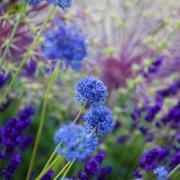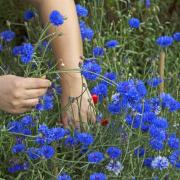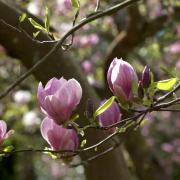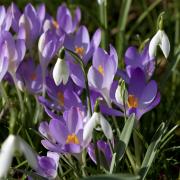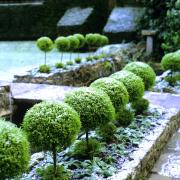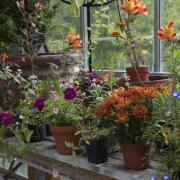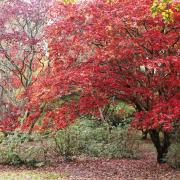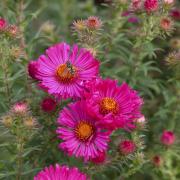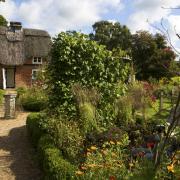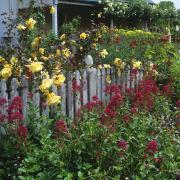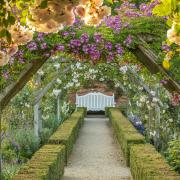If you would like a summer meadow this year, prepare the ground now and you will be rewarded with drifts of wildflowers and grasses-Poppies
Wildflower meadows conjure up images of wafting summer breezes rippling through waves of colour, reminiscent of ‘the flowery meades’ of the past. They are also one of the richest habitats for wildlife, with the greater diversity of plant species, the more kinds of animal and insect you can attract. In a long-established meadow in the countryside, you can find as many as 30 different species in a square metre, and even higher numbers on chalkland.Over the past 100 years, wildflower meadowland has declined due to more intensive cropping and the spread of settlement. In areas that are left unmanaged, such as disused railway lines or old airfields, the wildflowers have re-established themselves. The traditional meadowland is not a natural environment, having originated from the farming practice of grazing animals and making hay. As the top layer of growth was continuously removed, woody species couldn’t become established, lowering the fertility levels of the soil. This allowed the grasses to become less dominant, enabling wildflowers to flourish.
Your own flowery meadeYou can bring this wonderful tapestry of grasses and flowers into your own garden, even in small spaces. As well as meadows, both large and mini-sized, you could create wildflower areas in garden beds, containers or sections of flowering lawns. Keep in mind that you need an area that has direct sunlight most of the day. Meadows work well against a backdrop of shrubs or hedges and at the end of the garden. Mown paths through tall summer meadows give definition and a sense of intent.To create a meadow takes more than just letting a rough section of grass grow wild. You need to tailor the planting to your conditions. It takes planning, commitment and patience, but is well worth it. February is a great time to locate the site, select appropriate seeds and prepare the area ready to plant in March or April for a summer meadow. Seed mixes are available for different soil types to create spring or summer meadows. There are blends for dry, heavy, chalky, moist or acidic soils in sunny, woodland, waterside and hedgerow habitats. Ideally, choose species native to your locality or of British origin grown by wildflower seed companies on their own land, not taken from the countryside.
The processThe first step is to assess your soil’s fertility. Wildflowers grow best on poor, dry soil as fertile soils allow grasses to overtake the less vigorous flowers. Perennial weeds such as dock, dandelions and thistles indicate fertile soils and these will need to be removed before sowing. Next, dig or rotovate the soil, turning over the richer topsoil and burying it beneath poorer subsoil. Firm down the soil, rake it level and leave for a few weeks to remove any germinating weeds. Mix the seed with silver sand to make it easier to broadcast evenly. Rake soil lightly, water well and firm down. You can also augment by planting some wildflower plugs.Traditional meadow mixes of 80 per cent grasses to 20 per cent flowers bloom in their second year, with the first year being for management to allow the seedlings to establish. For a non-conventional meadow that flowers in the first summer, you could try a cornfield mix using native and non-native hardy annuals such as cornflowers, marigolds and poppies, which do well in more fertile soils.Once established meadows are quite low maintenance, needing cutting down after flowering and cuttings removed so they don’t increase fertility. Annual meadows will need some repeated sowings; others will improve over time with many plants self-seeding to reinforce the natural effect. Meadows can be a glorious addition to the garden, whether purely wildflowers or enhanced with other species. They make a harmonious medley, attractive to us and also to a host of wildlife. Meadows to visit
Meadows to visitHinton Ampner, AlresfordNGS gardens: Abbey Cottage, 80 Abbey Rd, Beechenwood Farm, Blackdown House, Braemoor, 21 Chestnut Rd, Colemore House, Farleigh House (see Yellow Book or www.ngs.org.uk for details)
Seed suppliersBritish Trust for Conservation www.btcv.org.ukLandlife Wildflowers www.wildflower.org.ukPictorial Meadows www.pictorialmeadows.co.ukMeadow Mania www.meadowmania.co.uk



